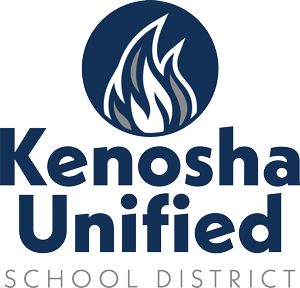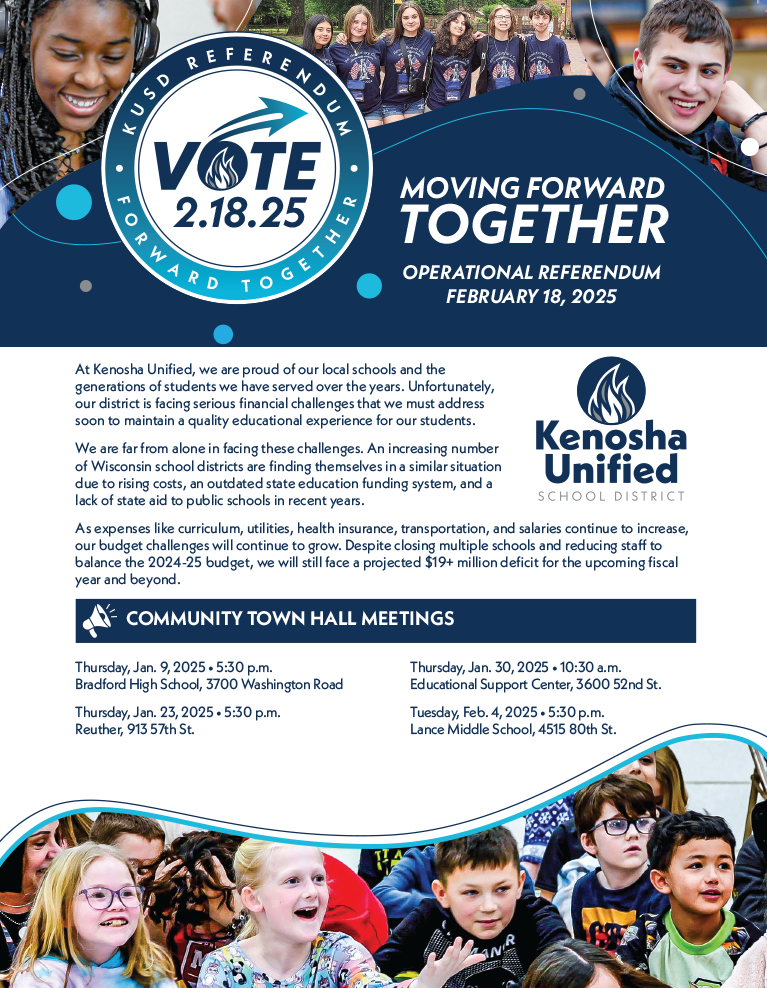Tax Impact Estimator
Year 1 (2025-26)
The initial property tax impact of the KUSD referendum would be approximately $125 per every $100,000 of assessed property at fair market value for the 2025-26 school year. For example, a home valued at $250,000 (the average home price in the City of Kenosha) could expect to see an impact of $313 per year as compared to the current year 2024-25.
Year 2 (2026-27)
The following year, property values are projected to grow by 5.86% and we expect to be aided 16% on the additional $23 MM of spending so the property tax impact of the KUSD referendum would change to approximately $91 per every $100,000 of assessed property at fair market value for the 2026-27 school year. For example, a home valued at $264,650 (the adjusted average home price in the City of Kenosha) could then expect to see an impact of $241 per year as compared to the current year 2024-25.


